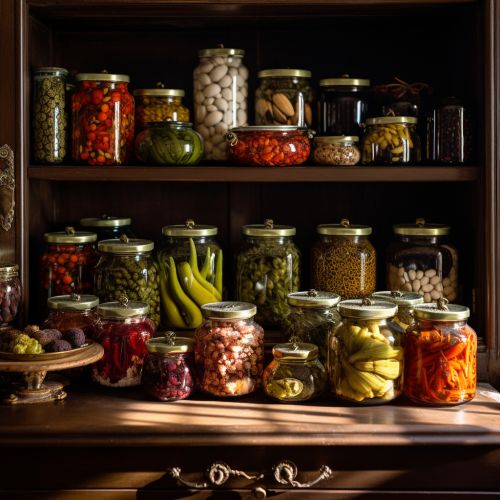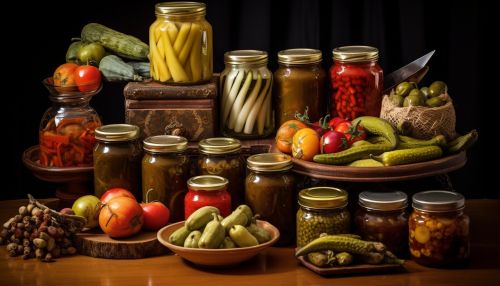Food Preservation
Introduction
Food preservation is the process of treating and handling food in such a way as to stop or greatly slow down spoilage to prevent foodborne illness while maintaining nutritional value, texture, and flavor. Preservation usually involves preventing the growth of bacteria, fungi, and other microorganisms, as well as retarding the oxidation of fats which cause rancidity. It also includes processes to inhibit natural ageing and discoloration that can occur during food preparation such as the enzymatic browning reaction in apples after they are cut.
History of Food Preservation
Food preservation has been a major part of human civilization. The earliest form of food preservation was likely done by our ancestors who discovered that food left in the sun or in the wind to dry out would last longer than food that was not preserved. This method, known as drying, is still used today for preserving a variety of foods including fruits, vegetables, and meats.


Methods of Food Preservation
There are many methods of food preservation that extend the shelf life of food. These methods can be categorized into physical methods, chemical methods, and biological methods.
Physical Methods
Physical methods of food preservation include heat treatment, refrigeration, freezing, vacuum packing, and dehydration.
- Heat Treatment: Heat treatment involves the use of heat to kill or deactivate harmful organisms. Examples of heat treatment include pasteurization and sterilization.
- Refrigeration and Freezing: Refrigeration and freezing work by slowing down the growth and reproduction of microorganisms and enzymes that cause food spoilage.
- Vacuum Packing: Vacuum packing involves sealing food in an airtight container, often after the air has been removed from it. This method greatly slows down the deterioration of food.
- Dehydration: Dehydration involves removing water from food, which inhibits the growth of microorganisms.
Chemical Methods
Chemical methods of food preservation include the use of substances such as salt, sugar, vinegar, and certain chemical preservatives.
- Salt: Salt is one of the oldest and most commonly used methods of food preservation. It works by dehydrating microorganisms through osmosis.
- Sugar: Sugar acts as a preservative by drawing water out of microorganisms through osmosis.
- Vinegar: Vinegar, often used in pickling, works as a preservative due to its acidity.
- Chemical Preservatives: There are many chemical preservatives that are used in food preservation. These include sulfites, nitrites, and nitrates.
Biological Methods
Biological methods of food preservation involve the use of microorganisms and enzymes to preserve food.
- Fermentation: Fermentation is a process in which microorganisms, usually yeasts or bacteria, convert sugar or starch into alcohol or acids. These alcohol or acids act as a natural preservative.
- Enzyme Inhibition: Enzyme inhibition involves the inactivation of enzymes that cause food spoilage. This can be achieved through methods such as blanching.
Impact of Food Preservation
Food preservation has a significant impact on food security, food waste reduction, and global trade. It allows for the long-term storage of food, reducing the risk of food shortage and enabling the transport of food over long distances. Furthermore, it helps to reduce food waste by extending the shelf life of perishable food items.
Future of Food Preservation
The future of food preservation lies in the development of new technologies and methods that can improve the safety, nutritional value, and shelf life of food. These may include high pressure processing, pulsed light treatment, and the use of natural preservatives.
